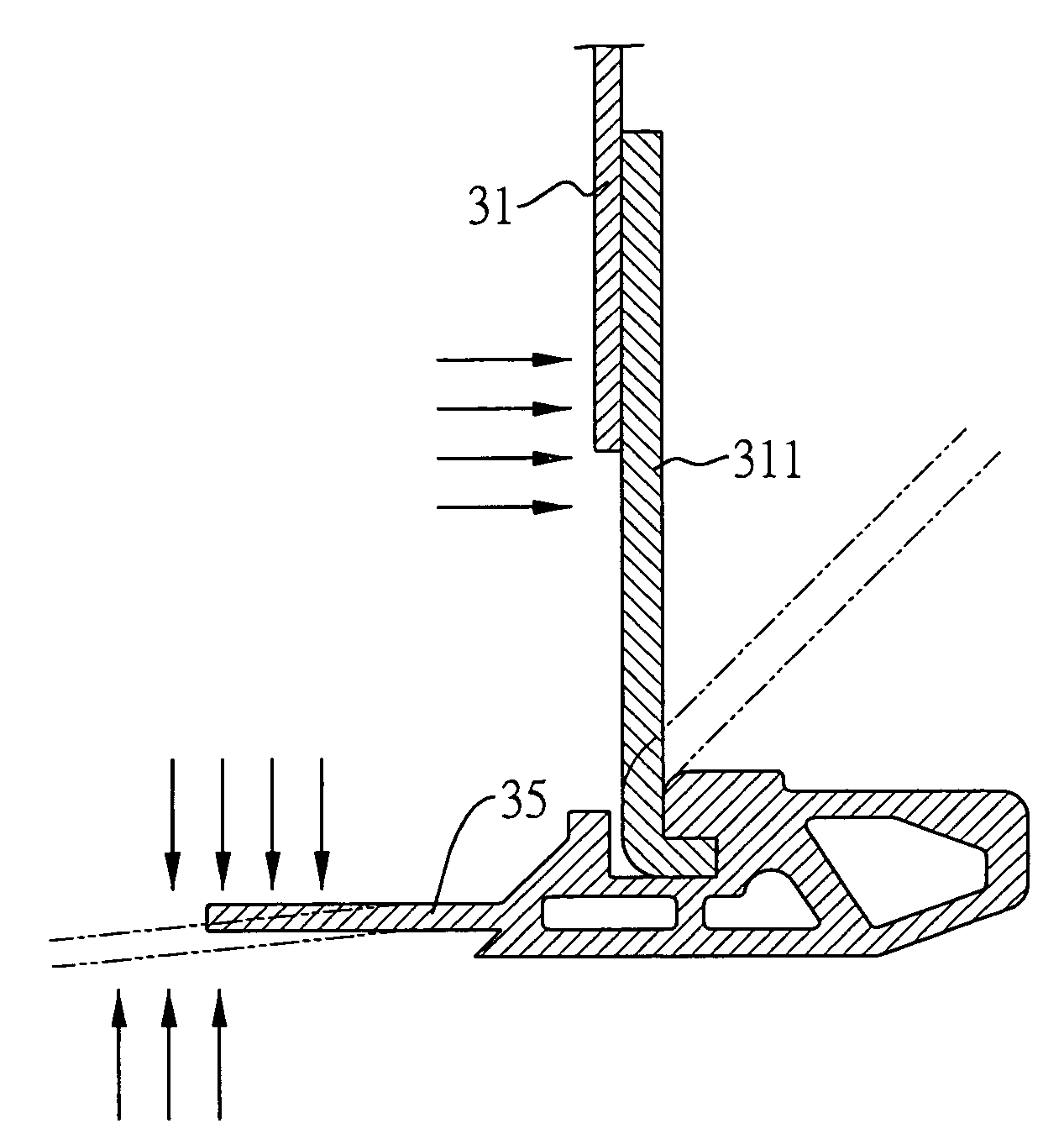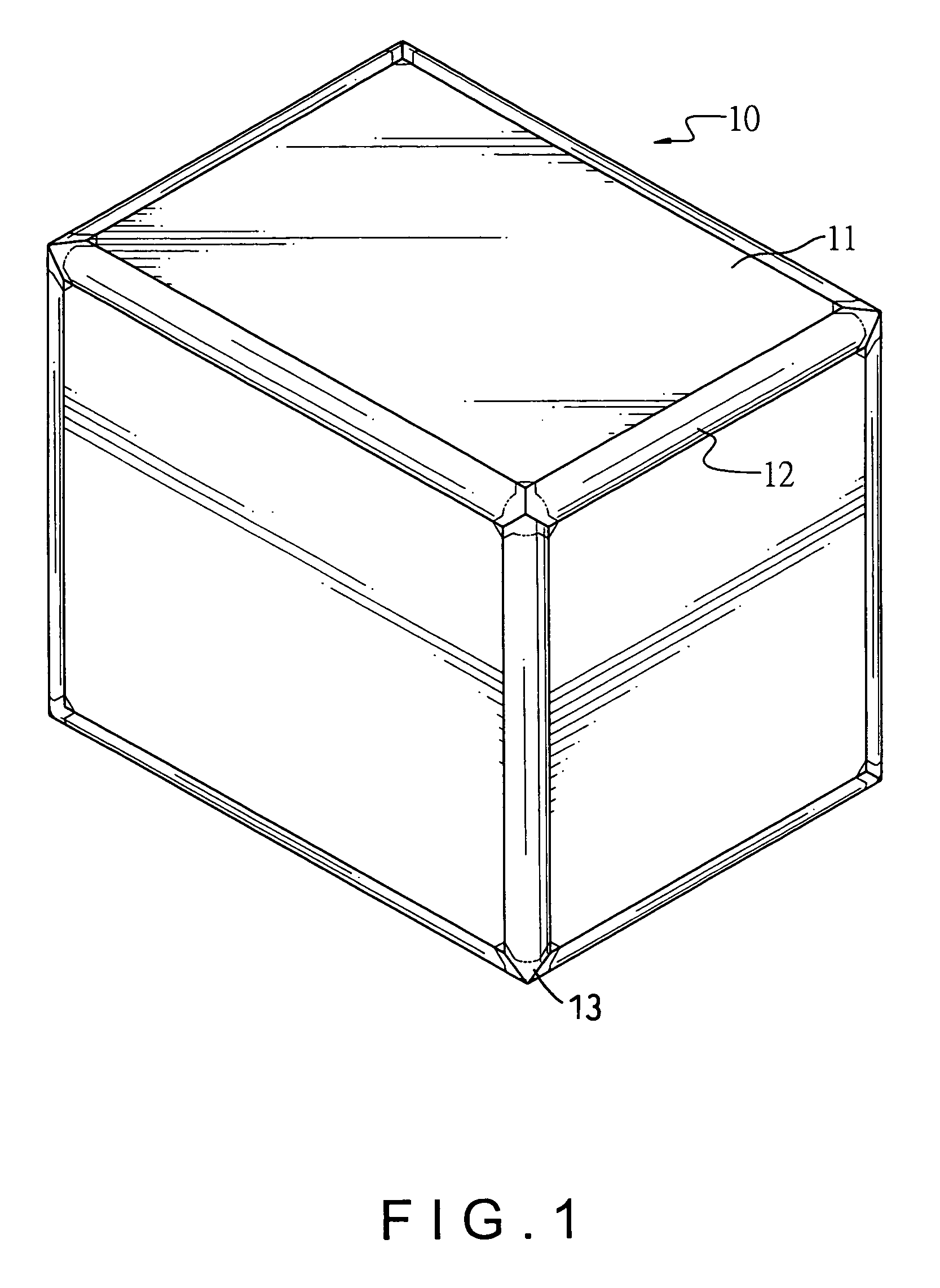Blast-resistant cargo container
a cargo container, blast-resistant technology, applied in the field of cargo containers, can solve the problems of varying or controlling the bending stiffness of the structure, and achieve the effect of minimizing the bending stress
- Summary
- Abstract
- Description
- Claims
- Application Information
AI Technical Summary
Benefits of technology
Problems solved by technology
Method used
Image
Examples
Embodiment Construction
[0027]For the purpose to utilize the membrane strength of a material, especially in the edges nearby, of a blast-resistant container we should use the connecting members which are able to transmit tensile forces between every two adjacent side panels and that it can rotate the member itself like a hinge when a blast occurs. The connecting member can be connected to side panels directly or indirectly. Which means that the both ends of connecting member can be connected to both side panels directly or only one end of connecting member is connected to one side panel, the other one end is not directly connected to the other side panel.
[0028]With reference to FIG. 1, the first preferred embodiment of a blast-resistant cargo container in accordance with the present invention is shown. The cargo container (10) has side panels (11) and plastically stretched connecting members (12) securely connected to adjacent side panels (11), so that a chamber can be formed inside the side panels (11) to...
PUM
 Login to View More
Login to View More Abstract
Description
Claims
Application Information
 Login to View More
Login to View More - R&D
- Intellectual Property
- Life Sciences
- Materials
- Tech Scout
- Unparalleled Data Quality
- Higher Quality Content
- 60% Fewer Hallucinations
Browse by: Latest US Patents, China's latest patents, Technical Efficacy Thesaurus, Application Domain, Technology Topic, Popular Technical Reports.
© 2025 PatSnap. All rights reserved.Legal|Privacy policy|Modern Slavery Act Transparency Statement|Sitemap|About US| Contact US: help@patsnap.com



